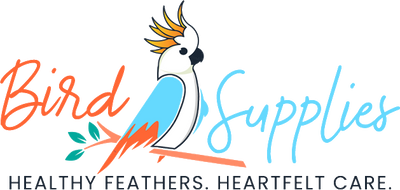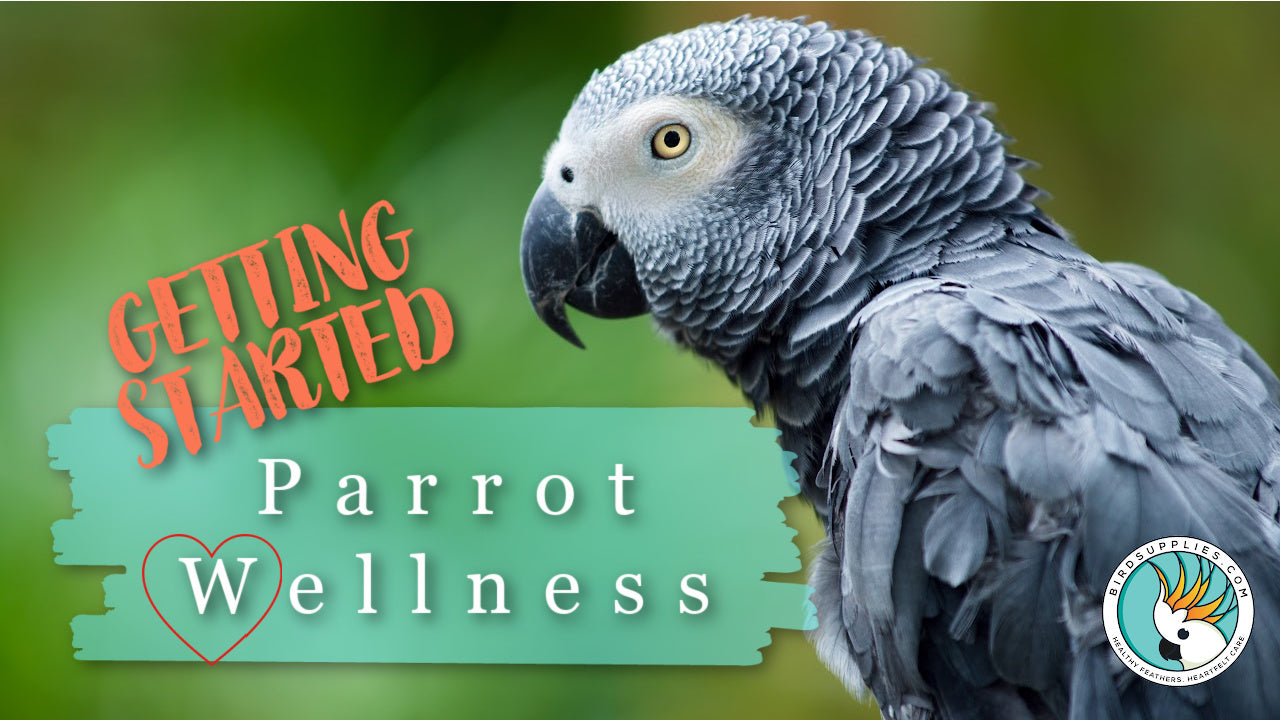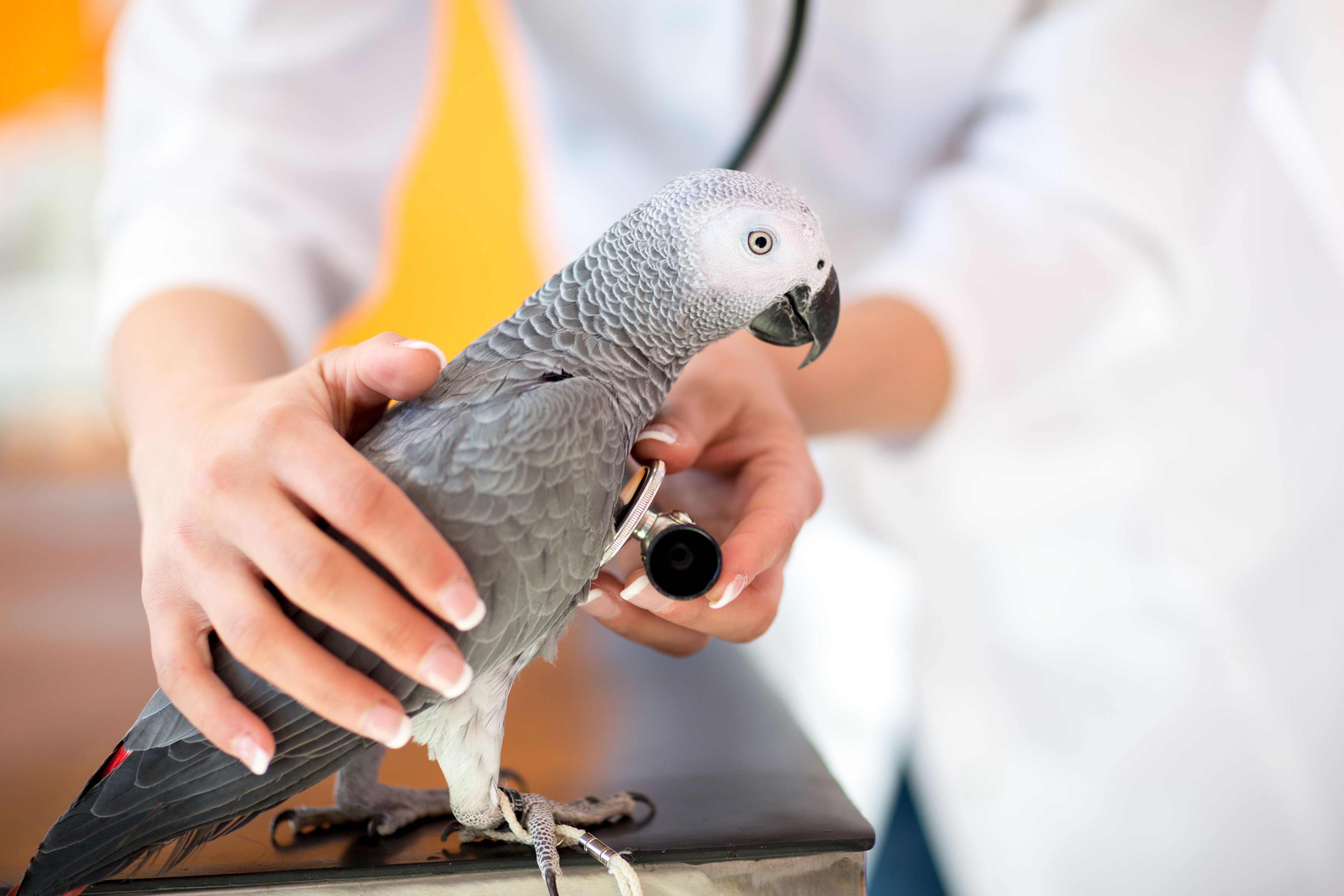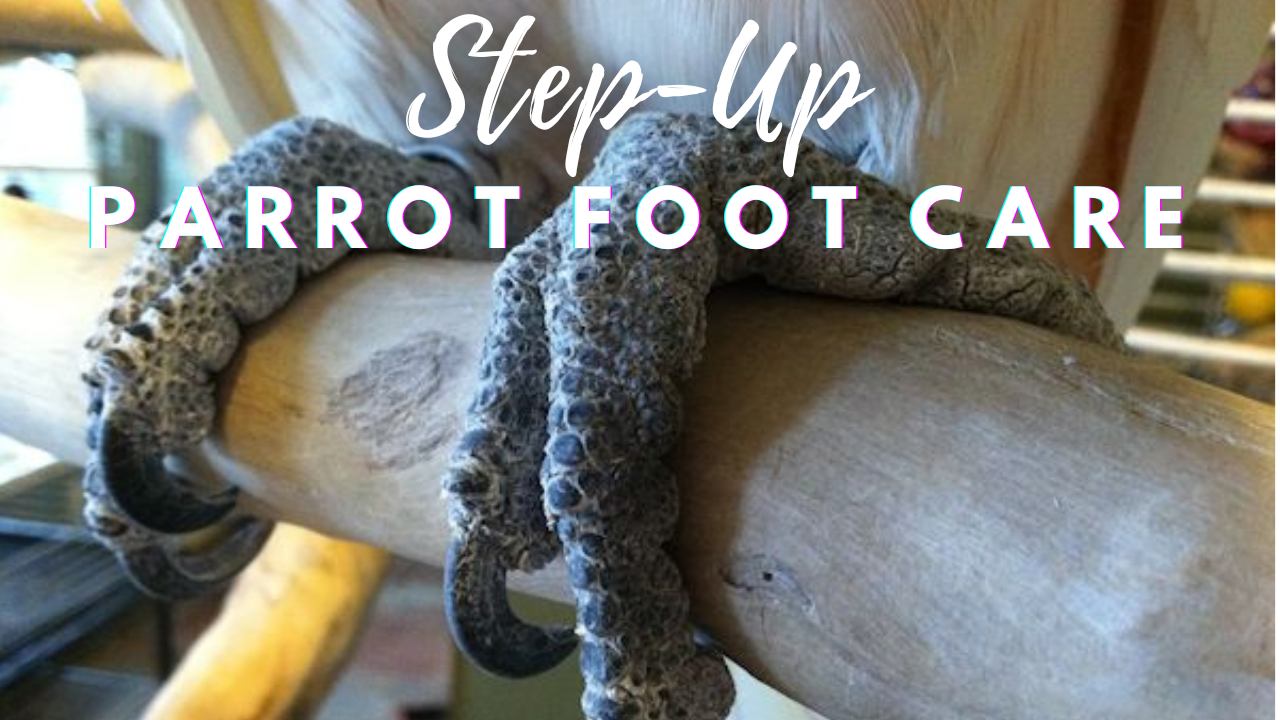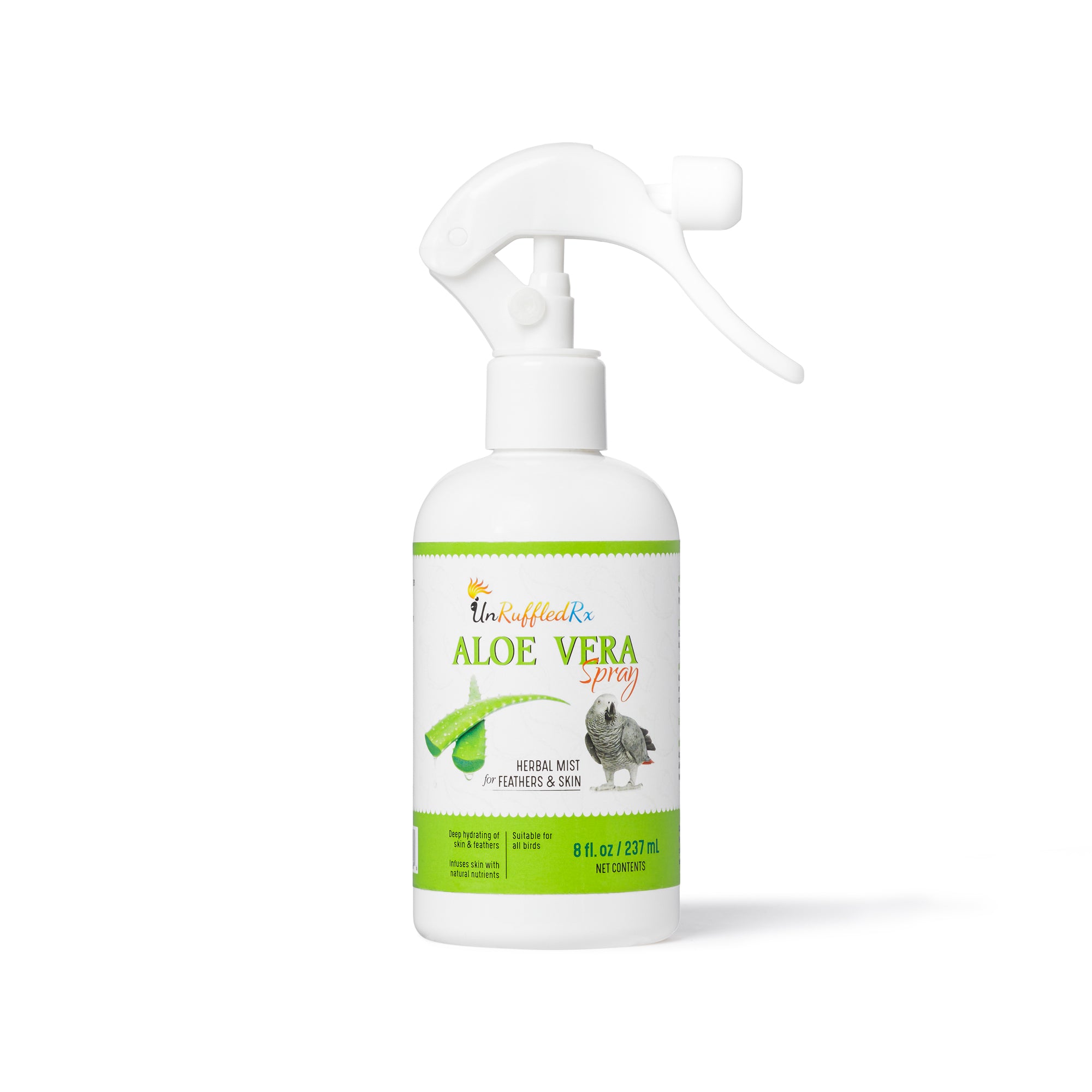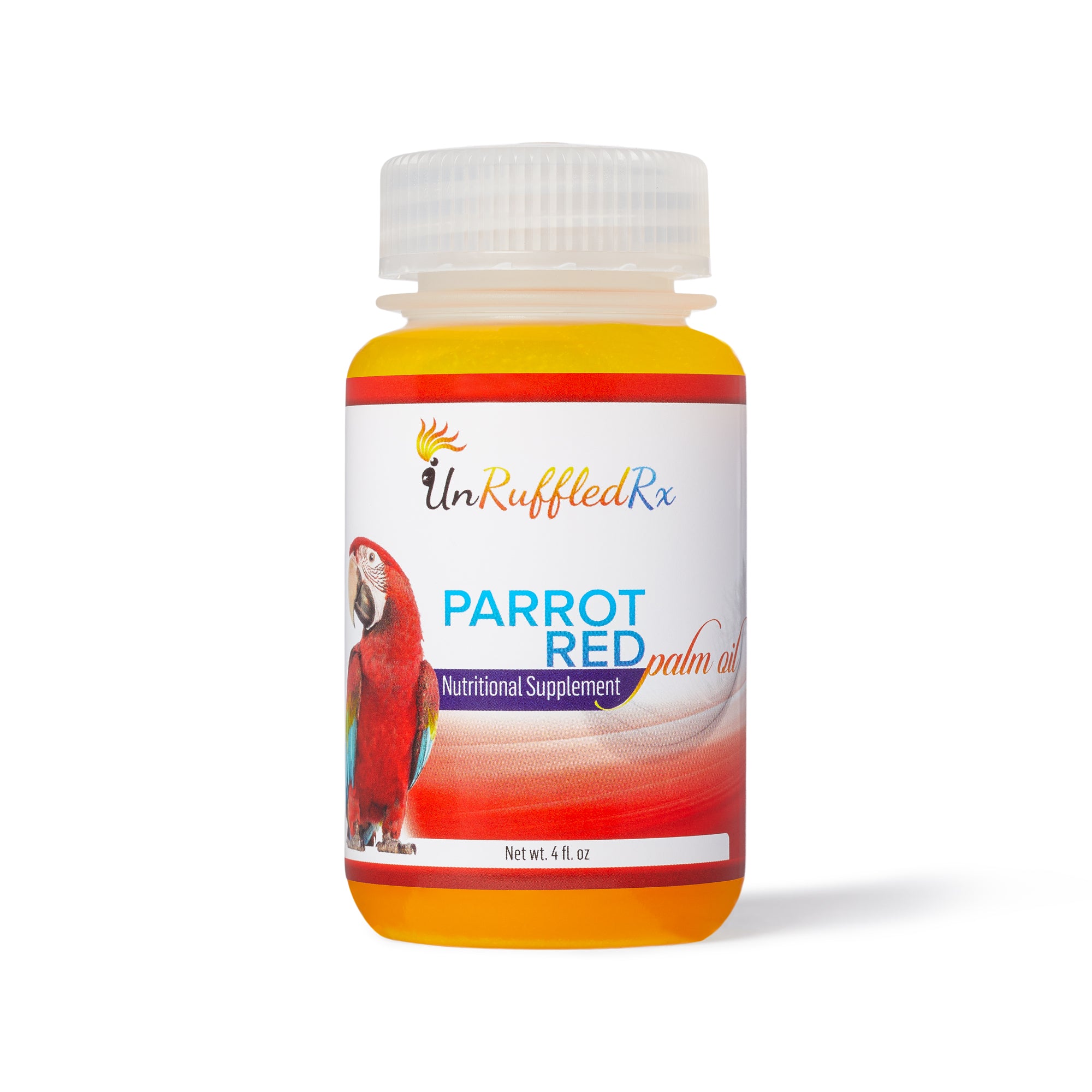Feather plucking in birds—it's the worry that keeps pet owners up at night, fretting over their beloved companions' health and well-being. The guilt gnaws at them, knowing that their feathered friends are suffering. But fret not, because understanding the issue is the first step to finding a solution.
But here's the silver lining: Feather plucking can be managed or even completely stopped, especially if caught early before it becomes ingrained behavior. There's hope on the horizon for your feathered friend.Many individuals resort to what I like to call the "one-and-done" approach in their endeavors to help their feather-plucking birds. They often seek advice from novice sites like Facebook or Reddit, hoping for a quick solution. However, in this blog post, we're taking a more informed route. My aim is to provide you with science-backed, vet and bird behaviorist recommended strategies to methodically plan out your bird's path to recovery.
In this blog post, I'll tackle various aspects concerning bird feather picking behaviors:
Table of Contents
So, let's dive right in to address what you need to know to stop feather plucking in birds.

What Is feather plucking in birds?
Many bird enthusiasts have marveled at the sight of exquisitely feathered parrots. Healthy birds boast vibrant and flawless plumage, enabling them to effortlessly realign and cleanse their feathers through the natural preening process.
If you stop and think about it, a lot of things go into the making of healthy, beautiful feathers. Wild birds have nailed it! They usually have everything they need to stay physically and emotionally healthy. From rich nutritional resources, to lots of sunshine, plenty of exercise, enrichment opportunities, and more.
By incorporating parrot wellness strategies that mimic their natural environment, you can provide your bird with everything it needs to maintain both physical and emotional health.
How do you tell if a bird is plucking or molting?
Some folks often mix up molting with feather plucking, but let's clear that up. Molting is a natural process where old feathers are shed to make way for fresh, healthy ones to grow in. It's a bit like when you shed your hair and new strands take their place. Depending on the bird species, molting typically occurs once or twice a year, allowing for the vibrant renewal of plumage.
Preening is a natural behavior for birds, essential for cleaning and realigning their feathers. During preening, a bird meticulously attends to each feather, moving from one to the next at a steady pace. It's a swift yet thorough process, where the bird carefully removes dirt, oil, and debris, ensuring each feather remains in optimal condition.
Feather plucking, however, occurs when a bird deliberately damages its own feathers through over-preening, barbering, or by fully plucking them out. Unlike normal preening, which is a necessary and efficient grooming behavior, feather plucking often carries an obsessive-compulsive feel. The bird may fixate on certain feathers, repeatedly targeting them despite potential harm, indicating an underlying issue that needs addressing.
In our pet birds, feather plucking could stem from physical stress triggered by an underlying illness or nutritional deficiency. Alternatively, emotional stressors such as inadequate sleep, boredom, lack of enrichment, or chronic hormonal behavior may also play a significant role.
Imagine feather-plucking birds as having a disorder akin to people who compulsively pull their hair out or engage in self-cutting behaviors, similar to trichotillomania. These behaviors, classified as obsessive-compulsive disorders in the DSM-5-TR, involve uncontrollable urges and repetitive actions.
Interestingly enough, we are now finding a strong correlation between both nutritional deficiencies and a history of traumatic experiences with mood disorders. These issues are believed to affect the brain chemistry that is responsible for a stable mood. It’s likely that birds may experience brain chemistry issues, too.
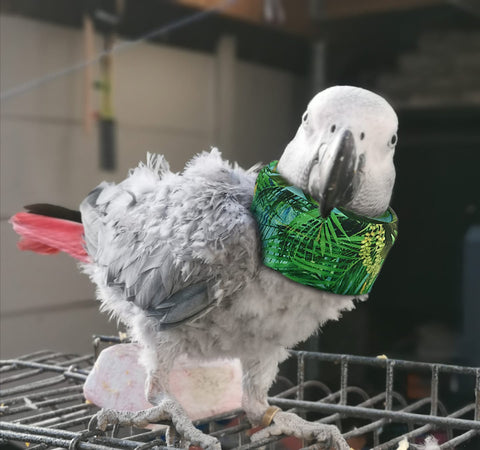
Anonymous customer photo: Congo African grey in a Huggle bird collar
Is it bad to pluck feathers?
Many individuals question whether feather plucking is detrimental to birds. While plucking feathers isn't inherently harmful, there's a potential risk of infection or damage to the feather follicle in certain instances. If feather plucking advances to self-mutilation, the resulting wounds can indeed be problematic.
However, it's vital to understand that the underlying causes of feather plucking are concerning. Feather plucking indicates that your bird is distressed, often due to a combination of stressors.
To effectively address feather plucking, it's imperative to investigate the root cause of your bird's distress. This typically requires a comprehensive approach, as the underlying issues are often intertwined with the unique care needs of exotic birds
What are the causes of feather plucking?
In essence, feather plucking in birds is a multifaceted issue. In simpler terms, it often involves a variety stressors that compel a bird to harm its most valuable asset - its feathers, which enable flight and serve as a means of communication to attract a mate.

As you can see on The Hierarchy of Parrot Needs chart, your pet has the following needs:
- Biological needs
- Emotional needs
- Social needs
- Behavioral training needs
As you can envision, similar to humans, when a bird's needs are not fulfilled, it experiences physical and emotional stress.
As stressors pile up, the bird's stress reactions intensify, emphasizing the importance of addressing underlying wellness needs to mitigate behaviors such as feather plucking. Navigating the complexities of exotic pet care requires patience and a tailored approach.
How do you help a stressed bird that feather plucks?
Here are evidence-based strategies for stopping feather plucking and other bird behavior problems in order effectiveness:
- Promote parrot wellness
- Rearrange the environment
- Use positive reinforcement to teach new skills
- Practice differential reinforcement
"For those looking to tackle their bird's feather plucking, I recommend turning to evidence-backed methods. Specialists in bird behavior, particularly those skilled in Applied Behavior Analysis, can provide valuable insights into effectively addressing challenging bird behaviors like feather plucking."
|
These techniques may sound technical, but don't worry—I'll break them down for you as we go along. Each method plays a crucial role in addressing feather plucking behavior in pet birds, and by understanding them better, you'll be better equipped to help your feathered friend. So, keep reading to learn how you can implement these strategies to support your bird's well-being
A bird behaviorist can coach you through this whole process.
1. Provide For Parrot Wellness
Parrot wellness encompasses six components that greatly enhance the health and well-being of companion birds by providing an optimal quality of life. The components include the following:
Preventative Healthcare:
Regular annual wellness exams are crucial for your pet bird's health, as they allow early detection of any potential diseases or issues. Your avian vet is skilled at recognizing subtle signs of nutritional deficiencies, common avian illnesses, and indicators of pain. Since birds are adept at concealing signs of illness or discomfort, timely veterinary care is essential to address any concerns and ensure your bird's well-being. A knowledgeable avian vet can also provide valuable guidance on optimizing your bird's diet, daily care routines, and overall health management.
Nutrition:
It is critically important to feed your pet bird an optimal, species-specific diet to prevent the effects of malnutrition. Your bird needs to be eating a high quality, premium bird pellet like Harrison's, Roudybush, or TOPS pellets accompanied by a wide range of uncooked, fresh, plant-based foods such as vegetables, low sugar fruits, herbs, grains, tree nuts, and more.
Discover a range of quality bird chop recipes and make it a da
Behavior:
Develop strong “parronting” habits. Like any good parent, it's important to know what normal behavior is, as well as, training for new skills and shaping manners.
Over and above, it will be important to learn effective strategies to turn around challenging behavior.
Applied Behavior Analysis (ABA):
ABA is a behavior change process a choice. You can learn more about positive reinforcement by reading Clicker Training for Birds and The Feather Plucking Workbook. Or, you can work with a bird behaviorist to make faster progress.
Environmental Enrichment:

Creating an environment that supports your bird’s energy levels, intellectual and problem solving capabilities, flock instincts, and more is essential for your pets emotional health.
One best things that you can do for your bird is to teach it how to forage and our foraging activities as much as possible. Foraging is the process of working to obtain food. Wild parrots do it all the time. In fact, they spend a good portion of their day just finding food sources and working to obtain they're rich nutrients.
Wild parrot parents teach their young how to forage so you'll need to teach your pet bird the joys of foraging. It's not that hard to teach a bird to forage. In fact, I've got a video on it here. Or, if you prefer to read about it, check out my book here.
I've had a lot of people call me up after talking with their vet who told them, “ just get your bird some toys.” In my opinion, what that really means is to get your bird some foraging toys. These are toys that are designed for you to hide your bird's food in it. Some of my favorite foraging toys ( or should I say my bird's favorite foraging toys), are found below.
I've tried some of the cheaper foraging toys on Amazon but I was concerned about the metal hardware that was used to make them.
Pediatric and geriatric care: Plan for the unique life stage that your bird is in to satisfy its physical and emotional needs. If you're keeping up with your veterinary wellness exams, your vet can coach you on life-stage care strategies.
Pain prevention and management:
Birds notoriously hide injuries, illnesses, and pain. This is yet another reason to stay on top of annual wellness exams. A bird that is in pain will experience mood disorders and behavioral challenges.
Just like any animal or person, birds can experience chronic pain as they get older. And, a bird that maybe hasn't been offered a good diet will probably have some health issues that cause discomfort. If your bird has been re-homed, you probably have no idea what issues may have contributed to chronic pain.
Make sure that you work with your avian vet to treat any current pain that your bird may be experiencing. Never attempt to medicate pain with Aspirin, ibuprofen, or NSAIDS made for human consumption.
2. Use A Bird Collar
A lot of people opt to try a bird collar early on in effort to interrupt the plucking cycle before it turns into a compulsive habit. The majority of birds adapt to a bird collar fairly easily. But we’ve found that birds with a severe plucking problem or those who've developed a compulsive habit over a period of time need much more support than simply a collar.
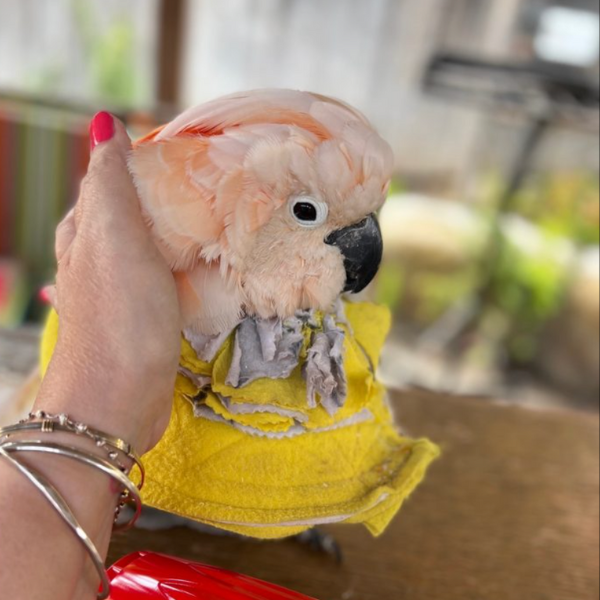
Keep in mind that a bird collar only temporarily interrupts the plucking cycle. In other words, most birds will return to feather plucking at some point after the collar is removed. A bird collar does not change the underlying causes of why the bird in the first place. Bird collars support your bird while you're learning how to use it long-term, like optimizing for parrot wellness and applied behavior analysis.
3. Use Evidence-based Behavior Supports
The next three steps to stop feather plucking behavior in birds involve therapeutic behavioral strategies known as Applied Behavior Analysis (ABA) Therapy. ABA is a scientifically-based behavior change approach based on the science of learning and behavior. ABA therapy involves using evidence of how behavior works to your individual bird’s actual situation. The goal is to increase behaviors that are helpful and decrease behaviors that are challenging.
The three strategies that I'm talking about include:
- Antecedent rearrangement,
- Positive reinforcement
- Differential reinforcement.
These are the easiest strategies for a lay person to correctly use. Negative reinforcement is also highly effective but it's hard for the layperson to use. And, if it's used incorrectly it could in fact make things worse.
While it's possible to teach yourself behavior change strategies at home, you're likely to make much faster progress by working with a bird behaviorist. A lot of people opt for just one session.
That's okay because usually the behaviorists will focus on optimizing wellness first. After all, keep in mind that we're talking about exotic pets here. Parrots require dramatically different care than a domesticated dog or cat.
How to Develop a Behavior Plan For Your Bird
Getting back to using ABA science-based behavior change strategies, there are a series of steps to take. The technical term for the process is called a Functional Behavior Analysis (FBA).
If this is your first time doing an FBA, plan on spending about 8 -12 weeks on it, depending on your familiarity with behavior therapies. By working with an experienced bird behaviorist, you could easily speed up the process to just a few weeks.
If you want to use the “do-it-yourself approach” here are the steps you'll need to take:
-
Get a wellness exam to rule out any medical causes for the feather plucking.
-
Conduct a time study or a detailed interview to get a crystal clear understanding why your bird is plucking in the first place.
-
Analyze the time study to learn what triggers your bird and what is reinforcing that behavior.
-
When you know what triggers the behavior, you can rearrange the environment so that your bird doesn't get triggered in the first place. This is called antecedent rearrangement.
-
Identify the function of the behavior. The term,” function of behavior,” simply means figuring out what the reinforcement is for the bird. In other words, what is your bird getting out it when it plucks a feather out?
-
Using positive reinforcement, teach your bird pro-social, desired behaviors that will replace the challenging behavior.
- Use differential reinforcement to turn newly taught replacement behaviors into your bird’s new routine.
Get the Feather Plucking Workbook which literally walks you through the process of optimizing for parrot wellness, conducting a time study, analyzing the results of the time study, and developing a behavior change plan. The Feather Plucking Workbook is also a really useful adjunct to individualized Behavior consultations.
Can birds die from feather plucking?
A lot of people are worried that their bird will die from feather plucking. It is true that a feather plucking habit tends to get worse over time. However, there is no evidence that the mere process of damaging feathers or pulling them out completely will kill a bird
That's said, it is critical to understand that the underlying, unmet wellness needs of the bird can be deadly.
On top of that, we've seen over and over again that feather plucking often gets worse over time. Part of that, of course, is unmet physical needs like the progressive effects of malnutrition. But, also, every time you're a bird pulls a feather out, it releases potent endorphins from the brain that, in effect, turn the act of feather plucking into an addictive process.
This is why people who loved a feather plucking bird turn to bird collars to interrupt the plucking cycle. They want to interrupt the addictive process.
About 10% of birds that develop a feather plucking habit go on to a dangerous disorder that is called self-mutilation. Self-mutilation is when the bird begins ripping into its skin and muscle tissue. This is an incredibly concerning habit. First of all, a bird can potentially bleed to death. Secondly, the potential for a life-threatening infection goes through the roof.
Common species that turn to self mutilation include cockatoos, African Grey Parrot, lovebirds, Quaker parrots, and sometimes eclectus parrots.
Do plucked feathers grow back?
Caught early, most birds are capable of growing their feathers back. As a general rule, if your bird has been plucking for less than 2 years, there is a good possibility that the feathers will grow back in. Using a good bird vitamin like FeatheredUp! Will help a lot.
However, birds that have been plucking the same area over and over again may have caused too much tissue damage to support feather growth. That doesn’t mean that your bird won’t benefit from improved parrot wellness, though!
Know this. Every time your bird plucks a feather out it rips out a bunch of skin tissue with it. Over time, scar tissue develops so that that feather follicle can no longer grow healthy feathers.
Follicular damage is rare with birds that over-preen or barber their feathers. However, we see it a lot with bird’s that pull the entire feather out. That means shaft and all.
In conclusion …
If you want to stop feather plucking once and for all, catch it early. Then, combine the full range of parrot wellness strategies with intensive behavioral supports and you’ll see massive improvements over time.
Related Posts:
Feeding Your Parrot A Well-balanced Diet
How To Tell If Your Bird Is In Pain & What To Do About It
Using Positive Reinforcement To Stop Your Bird From Plucking
5 Important Ways To Keep Your Bird Entertained When You're Not At Home
References:
https://www.vetmed.ucdavis.edu/hospital/small-animal/parrot-wellness
https://www.northernparrots.com/important-stuff-to-teach-baby-parrots-blog95/
Diane Burroughs, LCSW is a licensed psychotherapist trained in ABA therapy techniques. She specializes in avian anxiety disorders and is certified in Nutrition For Mental Health. Diane has written a number of bird behavior books and she offers behavior consultations. She's developed a range of UnRuffledRx Science-backed Parrot Wellness Supplies.
Diane's products have been featured in the Journal of Avian Medicine and Surgery and at Exoticscon, a conference for exotic pet veterinarians. Her bird collars & supplements are stocked in avian vet clinics and bird stores throughout the US. With over 30 years in the field of behavior, Diane has created thousands of successful individualized behavior plans that help pets thrive.
TAGS: #FeatherPlucking #BirdFeatherPlucking #FeatherPicking
SHARING IS CARING! PLEASE SHARE ON YOUR FAVORITE SOCIAL MEDIA NOW!
